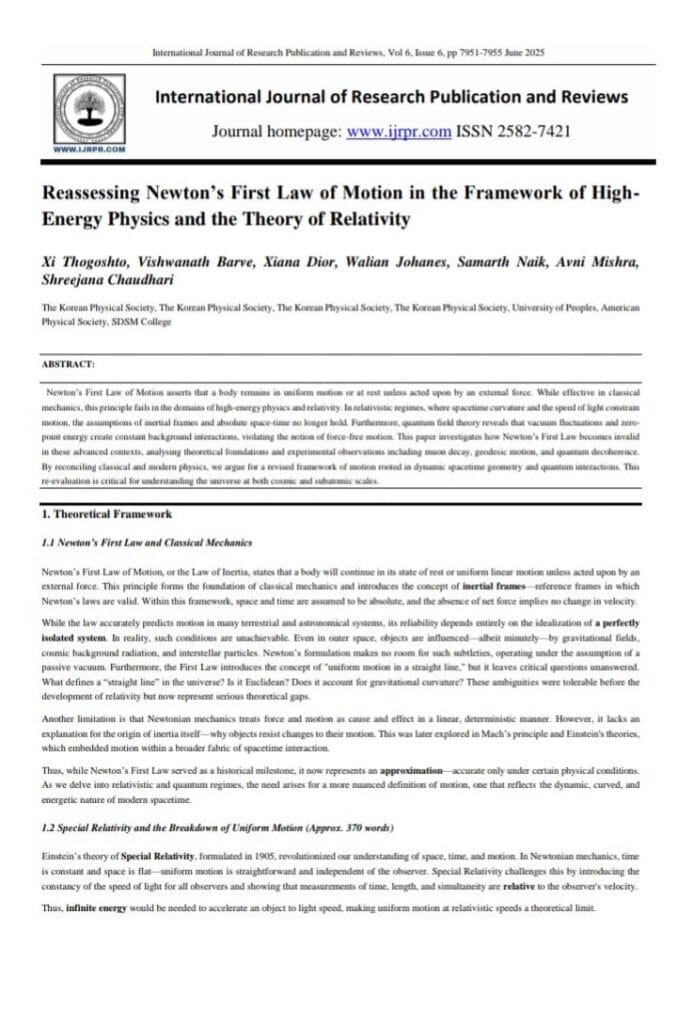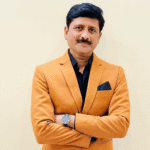In a remarkable achievement that bridges continents and disciplines, a team of seven scientists has published a pioneering research paper titled “Reassessing Newton’s First Law of Motion in the Framework of High-Energy Physics and the Theory of Relativity”. This collaborative work, published in the International Journal of Research Publication and Reviews (Vol 6, Issue 6, June 2025), offers a critical re-examination of Newton’s First Law through the lenses of quantum field theory and relativistic physics.
The research team includes Xi Thogoshto, Xiana Dior, Walian Johanes—noted theoretical physicists from The Korean Physical Society—who contributed foundational insights into relativistic spacetime dynamics. Shreejana Chaudhari of SDSM College brought in empirical grounding and precision through computational modeling and simulation.
On the Indian front, Vishwanath Barve, Samarth Naik, and Avni Mishra played key roles in conceptual synthesis, mathematical derivation, and quantum-field-based modeling. Avni, a high school physics enthusiast and member of the American Physical Society, worked extensively on decoherence modeling and quantum vacuum analysis. Samarth led simulation protocols and bridged theoretical gaps, while Vishwanath directed the research’s structural framework and overall formulation, ensuring clarity across classical, relativistic, and quantum regimes.
Together, this team revisited foundational physics principles and showed that Newton’s First Law no longer holds universally, particularly in environments influenced by curved spacetime, vacuum fluctuations, and quantum uncertainty. By using empirical examples like muon decay and theoretical models of particle motion in dynamic fields, they demonstrate how inertia must be seen not as a universal given—but as an emergent, conditional phenomenon.
This project, marked by months of intense coordination, diverse expertise, and youthful passion, underscores how interdisciplinary and international efforts can challenge even the most deeply entrenched scientific ideas. The work doesn’t refute Newton—it refines him for the 21st century.
Disclaimer: This article is sponsored and contains paid information provided by the client. [DmsmHub Media] is not responsible for the content, accuracy, or claims made in this publication. We are not involved in the creation or endorsement of the material.







